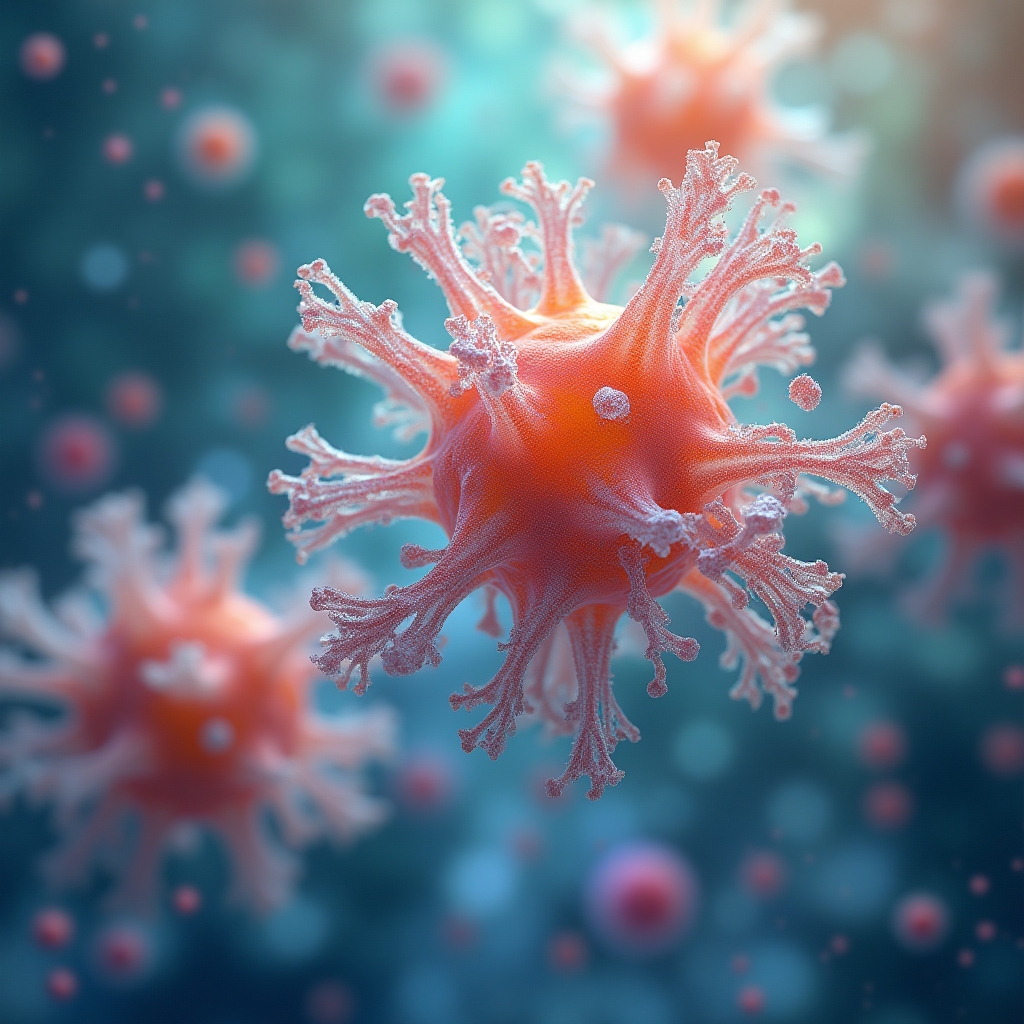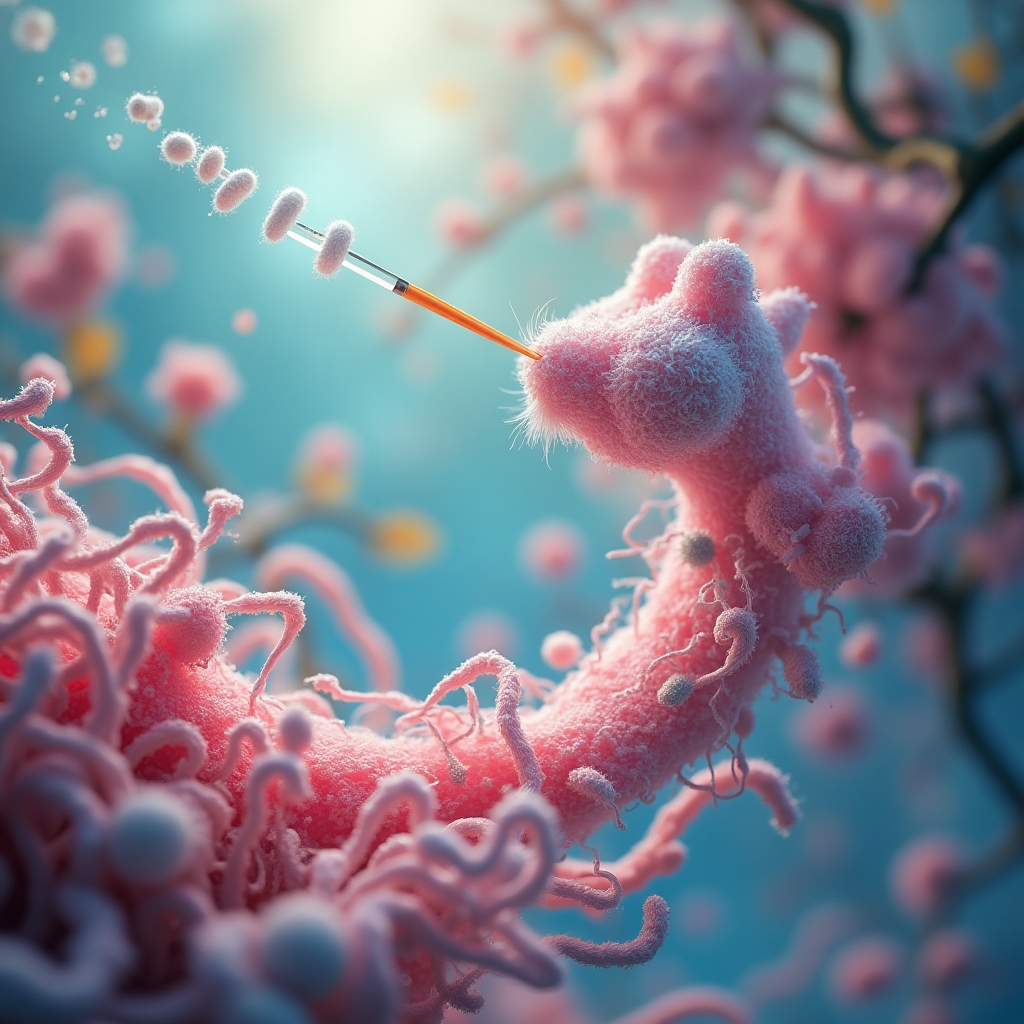In the labs of the esteemed Mayo Clinic, researchers have stumbled upon a discovery that could potentially revolutionize the treatment of type 1 diabetes. By borrowing a survival tactic from cancer cells, scientists believe they can protect the insulin-producing beta cells from immune attacks. The approach revolves around using a sugar molecule known as sialic acid. But how exactly does this work, and what could it mean for millions living with this autoimmune disease?
iN SUMMARY
- 🔬 A sugar molecule called sialic acid might protect insulin-producing cells in type 1 diabetes by mimicking cancer cell strategies.
- 🧬 Researchers at Mayo Clinic have engineered beta cells to prevent immune attacks, potentially transforming treatment approaches.
- 🌱 This discovery can lead to better transplant options without the risk of broad immune suppression.
- 💡 Promising findings could bring hope to the millions affected by type 1 diabetes globally.
The Hidden Armor of Cancer Cells
Let me explain. Cancer cells are adept survivors; they have to be. To avoid being destroyed by our body's immune defenses, they cloak themselves using a sugary camouflage of sialic acids. Imagine it as a kind of invisibility cloak, allowing them to slip by unnoticed. According to ScienceDaily, this technique is now being investigated for its potential to protect cells under attack from autoimmunity rather than just from the immune system's persistent pursuit of cancer.
What This Means for Type 1 Diabetes
Understanding this, researchers have started applying this knowledge to type 1 diabetes. Unlike type 2 diabetes, where the issue is insulin resistance, type 1 is an autoimmune condition where the body's own immune system mistakenly attacks insulin-producing beta cells in the pancreas.
By engineering these beta cells with sialic acid, the hope is to mimic cancer cells' ability to hide from the immune system, thereby preventing the immune attacks that characterize type 1 diabetes. Imagine if these beta cells could thrive without being assailed by their own body's defenses. This could lead to a form of treatment where the need for immune-suppressant drugs could be minimized, reducing side effects and improving life quality for those affected.
A New Horizon for Transplants
This discovery shines a promising light on the future of pancreatic beta-cell transplants, currently a procedure fraught with the challenges of immune rejection. Typically, these transplants require the recipient to take strong immunosuppressive medications. These medications carry serious side effects and make patients vulnerable to infections and other diseases.
But if beta cells can be shielded naturally using sialic acid, this treatment could open up transplants as a viable, less intrusive option. Imagine diabetic patients being able to live without the constant worry of an autoimmune attack disrupting their treatment.
Hope on the Horizon
While this development is still in early stages, it holds immense promise. The impact of type 1 diabetes is profound, touching millions globally. In Canada, from Toronto to Vancouver, and across the world, cities are home to individuals and families grappling with this relentless condition.
Potential Challenges
Every new scientific venture comes with its hurdles. There's a need for extensive testing to ascertain the safety and efficacy of using sialic acid in human beta cell transplants. Researchers are optimistic but cautious, aiming to ensure that employing this sugar molecule does not introduce new risks or complications. There's also the consideration of how this method can be applied affordably on a global scale. Still, with dedicated collaboration between scientists, healthcare professionals, and public health entities, there's reason to be hopeful.
Looking Forward
How could this potential breakthrough reshape the lives of millions? It could transform natural methods of treating type 1 diabetes, reducing the burden of daily insulin injections and the stress of constant blood sugar monitoring. It also embodies a wider movement towards understanding and mimicking the body's natural processes to manage chronic illnesses.
Would you like to be part of this conversation? What are your thoughts about blending cutting-edge science with healthcare solutions? Consider joining the discussion by sharing your views and questions in the comments. Let's explore how innovations like these can shape the future of health for communities worldwide.
Are you intrigued by such advances and want to stay updated on even more extraordinary discoveries? Join the iNthacity community by applying to become permanent residents then citizens of iNthacity: the "Shining City on the Web" and like, share, participate in the debate, and comment.
And as a final thought—what if someday, diabetes was a story we could all tell in the past tense, one of triumph over nature’s challenges?
Sources
Disclaimer: This article may contain affiliate links. If you click on these links and make a purchase, we may receive a commission at no additional cost to you. Our recommendations and reviews are always independent and objective, aiming to provide you with the best information and resources.
Get Exclusive Stories, Photos, Art & Offers - Subscribe Today!
























Post Comment
You must be logged in to post a comment.